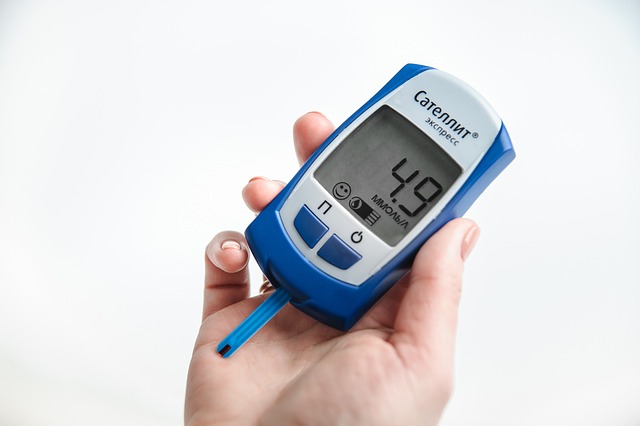Impaired glucose tolerance (IGT) is one way of saying that you have prediabetes or borderline diabetes. It is a condition in which your blood sugar is higher than normal, but not as high as it is in diabetes. Nobody wants to find out that they have IGT, but you can use it to your advantage by taking steps to reverse it or slow the progression to type 2 diabetes.
Are you at risk for type 2 diabetes? Lark Diabetes Prevention Program is a personalized program to help you lower your risk by making healthy lifestyle changes, such as losing weight and increasing physical activity. Your personal Lark coach is available to support you 24/7 on your smartphone. Lark can help you make small changes that fit into your lifestyle and have big results for your health!
What Is Impaired Glucose Tolerance?
Just like the name says, IGT is a condition in which your body has trouble tolerating glucose, which is the form of sugar in your blood. IGT is related to insulin resistance.
What it Means for Diabetes
Why should you care about IGT? It is a sign that you have prediabetes, and it is a risk factor for developing type 2 diabetes. Up to 1 in 10 people with IGT will develop diabetes within a year, according to Joslin Diabetes Center, which is affiliated with Harvard Medical School. By the end of 5 to 10 years, up to 9 out of 10 people with prediabetes will develop diabetes.
Great news: you can reverse IGT or delay type 2 diabetes with a healthier lifestyle.
Impaired Glucose Tolerance for A1C
When testing your blood sugar to assess your insulin sensitivity and possibility of prediabetes, your doctor can decide which test to order. An oral glucose tolerance test (OGTT) is one possibility for checking for prediabetes, and it is used to test for IGT with your A1C [2]. The test checks for your body's response to a load of carbohydrates.
In the test:
- You fast overnight
- You get your fasting blood draw to measure blood glucose
- You drink a solution with 75 grams of glucose (sugar). It is super sweet (75 grams of sugar is the amount in 5 frosted brown sugar toaster pastries), so prepare yourself!
- You wait for two hours.
- You get another blood draw to measure blood glucose.
If your blood glucose is high (140 to 199 mg/dl) at the end of two hours, you have IGT and your doctor may tell you that you have prediabetes.
The OGTT to measure IGT is one way to assess the possibility of prediabetes. Your doctor might use a fasting plasma glucose test, which can show impaired fasting glucose (IFG). Another option is a glycated hemoglobin (A1C) test, which gives an estimate of average glucose over the past three months.
Comparison of Methods for Assessing Prediabetes
Reversing IGT
If you have IGT or prediabetes, you have two choices. You can "give up" and "accept" that you will get diabetes, or you can take charge. Science is on your side: a famous study found that patients with prediabetes who lost weight and increased their physical activity levels lowered their risk of developing type 2 diabetes by 58%. [3]
Weight loss if you are overweight or obese can greatly lower your risk of developing diabetes. Each kilogram, or 2.2 lb., that you lose, can lower your risk by 16%. Instead of crash diets that may not be sustainable, try making portion sizes smaller, swapping out high-calorie foods for lower-calorie ones, and focusing on vegetables and lean proteins to stave off hunger.
Getting active with moderate-intensity physical activity boosts insulin sensitivity and fights IGT. You can walk, swim, cycle, try an aerobics, pilates, or kickboxing class, or play a sport. The goal is to work up to at least 30 minutes, 5 or more days a week. If that sounds like too much, remember that you can break it up in bouts of 5 minutes. Everything counts!
A healthy diet for prediabetes can help you lower blood sugar. This means eating plenty of vegetables, focusing on lean proteins, healthy fats, and foods that are high in fiber. Foods to avoid with IGT include sugary foods and beverages, fried foods, processed meats, and refined carbs.
Other ways to lower blood sugar and improve heath are:
- Reduce or manage stress.
- Get adequate sleep.
- Ask your doctor about nutritional supplements, such as ceylon cinnamon.
Diabetes Prevention Program for Impaired Glucose Tolerance
Let's go back to science and that famous lifestyle study that found a dramatic reduction in diabetes risk with weight loss and a healthy lifestyle. That lifestyle intervention is still available! You may be eligible to join a Centers for Disease Control and Prevention (CDC) fully recognized Diabetes Prevention Program (DPP) to help you lower your blood sugar to delay or prevent type 2 diabetes.
The program has a curriculum that is designed to take a year. It covers strategies for losing weight and getting active, plus overcoming barriers in your daily life. You can choose an in-person DPP program and attend regular meetings, or choose Lark digital DPP, which lets you access your prediabetes program at any time, from anywhere, through your smartphone.












.webp)






